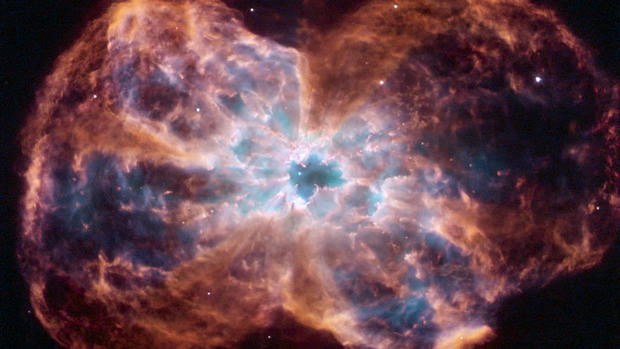Hubble snaps shrapnel from an exploded star
More than 2,000 light years away, in the constellation Cygnus, the Swan, float the remnants of a shattered star.
Once 20 times the size of our sun, the star exploded 8,000 years ago. A new image from the Hubble Space Telescope reveals its drifting, delicate remnants. This image of the Veil Nebula -- so named for the soft, wispy appearance of the supernova's debris -- shows a two-light-year section of the structure, which stretches 110 light-years across.
The image, a composite of six pictures taken by Hubble, show all that remains of the forgotten star -- the brilliant result of a fast moving blast wave from the ancient explosion crashing into a wall of cool, denser interstellar gas.
Each color corresponds to a different element. Red is the glow of hydrogen, showing cooler gas that was excited by the shock collision and has since diffused. A few thin red filaments show where gas was swept into the shock wave at speeds of nearly 1 million miles an hour -- fast enough to travel from Earth to the moon in 15 minutes. The smooth blue arches are oxygen. Sulfur appears as fluffy patches of green.
In a corresponding video, a 3D visualization flies around and into the nebula, showing its thin, rippled surface, which NASA describes as looking from the side like "a crumpled bed sheet."
Astronomers are comparing the new images to ones taken by space telescope in 1997 to see how the nebula has expanded over the last 18 years. The agency said that the supernova that created the Veil Nebula would have been briefly visible on Earth about 8,000 years ago as a bright "new star" in the northern sky.
